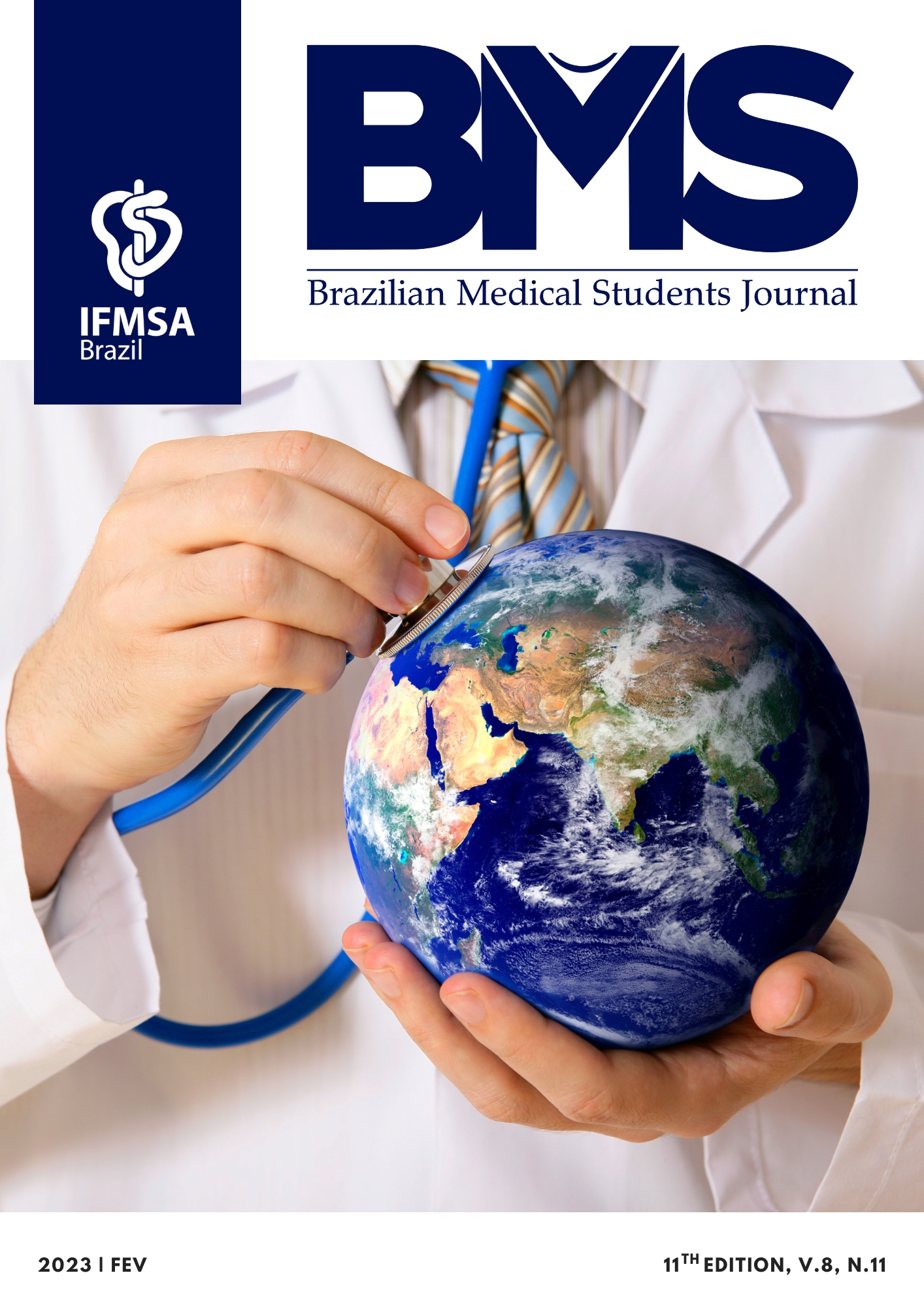“Demystifying adhd: myth or truth” – social education action carried out by academic leagues in a shopping mall
DOI:
https://doi.org/10.53843/bms.v8i11.428Keywords:
Health Education, Pediatrics, Attention Deficit Disorder with HyperactivityAbstract
INTRODUCTION: Attention deficit hyperactivity disorder (ADHD) is a pathology characterized by inattention and/or hyperactivity-impulsivity and is the most common neurobehavioral disorder among individuals aged six to seventeen years. The present work aims to report the experience of medical students in a health education activity about ADHD. EXPERIENCE REPORT: The activity was able to provide the participating students with the experience of being part of a very enriching face-to-face action made possible according to the security measures required during the COVID-19 pandemic period. DISCUSSION: In view of the completion of all the steps proposed in this health education action, the importance and need to deepen the knowledge of medical students on topics involving mental health is even more undoubted. Undoubtedly, the commitment of all the students involved in the action, linked to a previous organization, was essential for the event to occur without major problems. The help of private companies in health education projects is shown to be categorical and useful since they play an important role of social responsibility towards the population in general. CONCLUSION: The project in question was very positive for medical students, since it was possible not only to disseminate information to the population about a prevalent and still stereotyped topic in our society, but also to provide educational and integrative practice, enabling an immersion in this topic in mental health.
Metrics
No metrics found.
References
Sharma, A, Couture, J. A Review of the Pathophysiology, Etiology, and Treatment of Attention-Deficit Hyperactivity Di-sorder (ADHD). Annals of Pharmacotherapy. 2013 aug;48(2):209–225. DOI: https://doi.org/10.1177/1060028013510699
Sociedade Brasileira de Pediatria. Tratado de pediatria (volume 2). São Paulo: Editora Manole; 2021. 3282 p.
Cortese S, Adamo N, Del Giovane C, Mohr-Jensen C, Hayes AJ, Carucci S, Atkinson LZ, Tessari L, Banaschewski T, Coghill D, Hollis C, Simonoff E, Zuddas A, Barbui C, Purgato M, Steinhausen HC, Shokraneh F, Xia J, Cipriani A. Com-parative efficacy and tolerability of medications for attention-deficit hyperactivity disorder in children, adolescents, and adults: a systematic review and network meta-analysis. Lancet Psychiatry. 2018;5(9):727-738. DOI: https://doi.org/10.1016/S2215-0366(18)30269-4
Custodio MC. Hiperatividade por déficit de atenção e a importância da Neuropsicologia na educação. Virtus-Rev Cient Psicopedag. 2002 jan;59(2): 137.
Hinshaw, SP. Attention deficit hyperactivity disorder (ADHD): controversy, developmental mechanisms, and multiple levels of analysis. Annual review of clinical psychology. 2018 mar;14(7):291-316. DOI: https://doi.org/10.1146/annurev-clinpsy-050817-084917
Poeta LS, Neto FR. Estudo epidemiológico dos sintomas do transtorno do déficit de atenção/hiperatividade e transtornos de comportamento em escolares da rede pública de Florianópolis usando a EDAH. Brazilian Journal of Psychiatry, 2004 set;26(3):150-155. DOI: https://doi.org/10.1590/S1516-44462004000300004
Barbosa G; Barbosa AAG. Síndrome hipercinética: sintomas e diagnóstico. Pediatria Moderna. 2000 ago;36(8):544-546.
Berbel, NAN. As metodologias ativas e a promoção da autonomia de estudantes. Semina: Ciências sociais e humanas, 2011 jan;32(1):25-40. DOI: https://doi.org/10.5433/1679-0359.2011v32n1p25
Maciel VDJ, Lima L, Sarinho VT. Desatentos: Um jogo sério para a conscientização do TDAH. Anais Estendidos do XXII Simpósio Brasileiro de Computação Aplicada à Saúde. 2022. Teresina, p.104-109. SBC, 2022, pp.104-109. DOI: https://doi.org/10.5753/sbcas_estendido.2022.222559
Downloads
Published
How to Cite
Issue
Section
License
Copyright (c) 2023 Pedro Hugo de Sousa Sampaio, Ana Beatriz Fernandes Ramos, Cristiano César Rodrigues Augusto Gonçalves, Karen Soares Mendes, Maria Eduarda Ribeiro Romero, Atália Isabelle Estevam Nogueira Ferreira, Maria Eduarda Corrêa Félix, Gabriele Cruz Monteiro, Manuela Maria de Lima Catunda, Isa Diniz Teixeira de Paula, Rejane Brasil Sá

This work is licensed under a Creative Commons Attribution 4.0 International License.
User licenses define how readers and the general public can use the article without needing other permissions. The Creative Commons public licenses provide a standard set of terms and conditions that creators and other rights holders can use to share original works of authorship and other material subjects to copyright and certain other rights specified in the public license available at https:// creativecommons.org/licenses/by/4.0/deed.pt_BR. Using the 4.0 International Public License, Brazilian Medical Students (BMS) grants the public permission to use published material under specified terms and conditions agreed to by the journal. By exercising the licensed rights, authors accept and agree to abide by the terms and conditions of the Creative Commons Attribution 4.0 International Public License.






